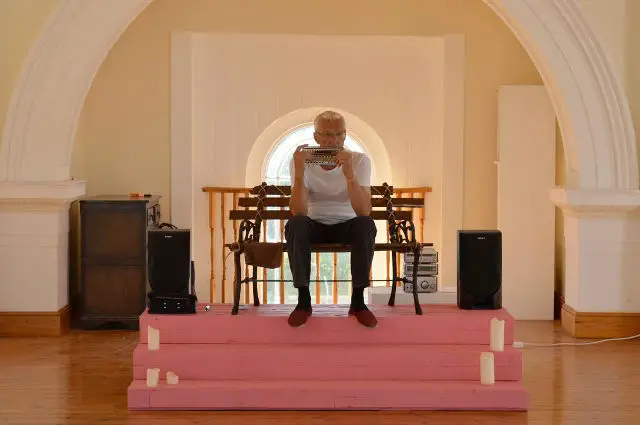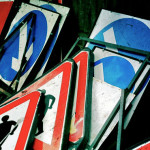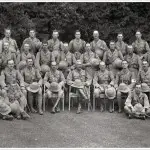Our thanks to John Armstrong for this review of the Radu Malfatti event held at The Depozitory last weekend. Ed
I have to report that this jaded and increasingly elderly cynic (seen it all, done most of it, yawn) found himself spellbound by the above set and would like to spend some time explaining why.
Radical music at the far end of the innovative spectrum is usually considered and derided by most as too obscure, elitist and somewhat nonsensical. This isn’t the case, like any genre there is material that is badly thought out and played in a way that is an insult to the audience, but the majority of this kind of material is put together by skilled composers and musicians with personal integrity and a desire to see what can be done to move things forward in exciting ways. Last Saturday Radu demonstrated to me that he is one of these.
The sound of silence
I’ll get on to the sounds made by the instruments later, but first of all I’d like to start with silence.
I’m taking the risk of sounding more than a little poncey and pretentious, but the absence of sound normally terrifies musicians and disturbs audiences, because we’re conditioned to listen to things that make a noise and we don’t know how to react when presented in a performance setting with the absence of noise.
‘What Happens Next?’
Until about five years ago, I too derided and scorned, viewing this particular element as part and parcel of the ambient trend that I detest. I then came across, by chance, the music of Lawrence Crane, and found myself paying attention to the silences in anticipation of what came next.
At the risk of being overly grand, this realisation has changed the way I listen to all music from C and W to extreme vocal, because these apparent gaps mark out and carry what’s gone before as a kind of potential ‘ground’ for What Happens Next.
Silence the third instrument
There are many silences in Radu’s work. Saturday night’s set contained two instruments, pre-recorded sine waves and bass harmonica and after about five minutes of the 40 minute piece.
I came to the staggeringly insightful view that these absences were being used as the third instrument and was a little disconcerted to discover in conversation later that this was not part of Radu’s intention. However I’m so impressed with my own acuity that I’m sticking with this one. Because I can.
Not a religious service
In the performance, the silence wasn’t absolute: we had seagulls flying overhead; conversation in the street below and a motorcycle riding past. I asked Radu afterwards how he felt about this and was gratified to learn that he saw this as something to be risked and welcomed.
I think this is important because I think all performers need to live with the unexpected and potentially disruptive – those that demand a certain kind of revered hush are usually taking themselves far too seriously – we’re not conducting a religious service.
Completely absorbing
We now come to surprise. I like being startled by any kind of work because this creates new and unexpected trains of thought in my head and re-frames my responses to what Might Be Going On.
With a work consisting of long notes, these set up a kind of momentum which led to aural expectations which denied in quiet subtle ways. It was at this point that your hapless scribe found himself (easily bored, distracted etc etc) completely absorbed with the delicate complexity of what he listening to. In conversation afterwards Radu explained that one of his intentions is to encourage people to think about the ways in which they listen and how the auditory process affects the way we think and feel. This set certainly had that effect on me.
The start of a new relationship
It should be clear by now that this wasn’t a drive-by listen in that there was anything that you could hold on to in the ‘normal’ way. I’m a fan of sixties pop and clever lyrics, but I recognise these don’t require much more than a cursory listen to get under the skin.
Saturday night’s set, as with most serious work, demanded close attention which for me led to the beginnings of a relationship with Radu’s work.
Experience Radu in the flesh
I’ll eschew labels and categories for this stuff, but instead give the trajectory – accordion playing traditional Austrian music then playing trombone in a trad band before moving through improv and free jazz for many years as one of the finest trombonists around and then to this quite unique development(s) with trombone which has now been put down and replaced by the bass harmonica.
There are clips on YouTube, there are many CDs but neither of these can competes with Radu Malfatti’s work in the flesh.
Image: © Maya Malfatti





